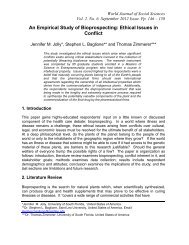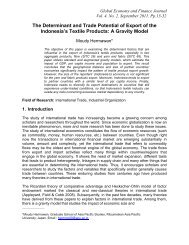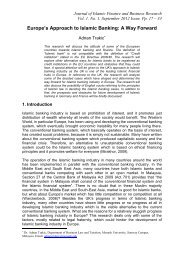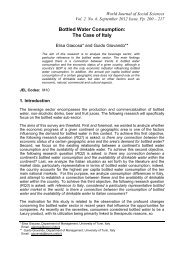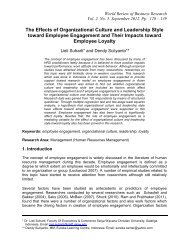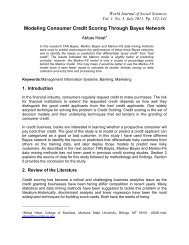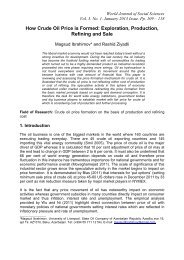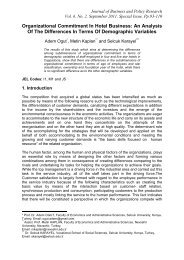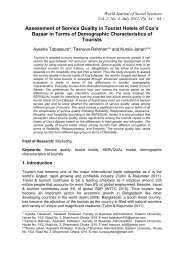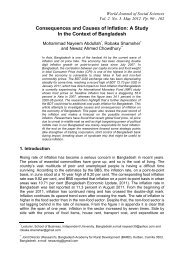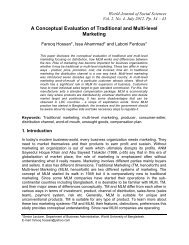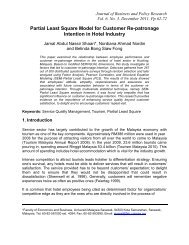Muhammad Faisol Chowdhury - Wbiaus.org
Muhammad Faisol Chowdhury - Wbiaus.org
Muhammad Faisol Chowdhury - Wbiaus.org
Create successful ePaper yourself
Turn your PDF publications into a flip-book with our unique Google optimized e-Paper software.
<strong>Chowdhury</strong>remuneration, rewards and incentives were also dominant in these sectorscomprised with mostly MNCs.Significantly, it is observable from table 1 that, sectors which were largely constitutedof MNCs had high level of PMS adoption and implementation; suggesting a quitepositive climate for HR personnel to maintain a collateral connection between PMSwith other HR deliverables. On the other hand, significantly lower PMS involvementand connection with HRM decision making activities had been found in the sectorsdominated by the local private <strong>org</strong>anizations.6. Discussion on FindingsFrom the above findings, on an overall basis it is observable that, the private local<strong>org</strong>anizations which were surveyed placed medium importance in the adoption andimplementation of standardize PMS and its linkage with other HRM systems ordecisions. Most of these local companies had different types of PMS systems andprocesses in place. Evidently, some of them were not effective to bring any positivechange in the <strong>org</strong>anizational growth (HR Bangladesh 2011). However, in a countrywhere an „extended family‟ culture influences the management practices in most ofthe large conglomerates and other private companies (HR Practices Survey BD2006), it is pleasant to observe a paradigm shift in management attitude among thelocal private sector <strong>org</strong>anizations.The survey also pointed out certain problems related with PMS implementation andconnection with other HRM key activities and significant changes were required inthose areas. For instance, the integration of the PMS with HRIS (Human ResourceInformation System) was a distinct gap area. Integration with HRIS makescommunication timely and cost-effective. A small number of local privaterespondents had the PMS information stored and tracked in their HRIS. In case ofthe more traditional sectors like RMG, manufacturing and business conglomerates,the percentages were even lower. Transparency in performance appraisals was notcommon and PMS in most of the surveyed <strong>org</strong>anizations was only on pen andpaper. Competency based assessment was a recent entrant, adopted currently onlyby a few among all the surveyed local enterprises. Performance took the front seatwhereas assessment of potential was not getting the attention it deserves. Similarly,Performance evaluation outputs were not linked to other key elements of the HRvalue chain like training and development, career management and successionplanning. Furthermore, the PMS data had implication for many short term and longterm processes which were being ignored by most of the top authorities. The policiesand procedures also require proper documentation to bring confidence andtransparency in the system. While moving to more maturity in PMS, it would also bevery critical for the <strong>org</strong>anizations to use electronic database to manage historicaldata and to make the policies easily available. Also evident from the analysis of theresponses that there are scopes for adding more maturity in the sub-processes ofPMS, especially in the traditional sectors such as RMG, manufacturing, and in casesof business conglomerates.On the other hand, in almost all the surveyed MNCs, PMS was considered as one ofthe most important tools to successfully manage the performance of employees and163



